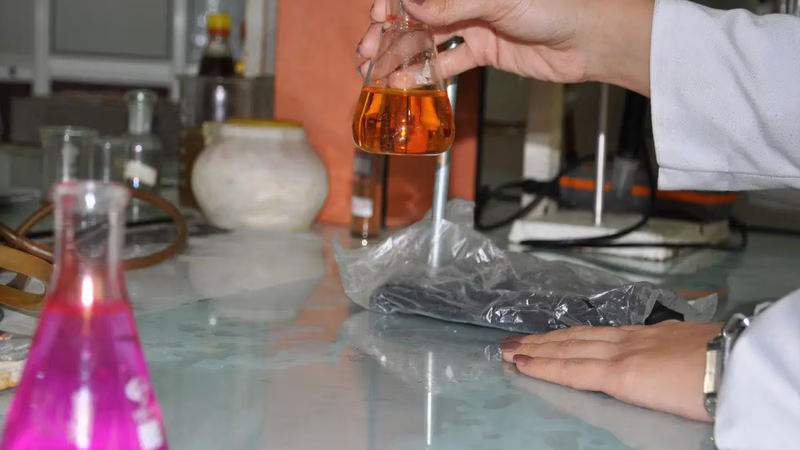
Laboratory chemicals and nanomaterials for scientific research.
Laboratory chemicals are substances used in scientific research, experimentation, analysis, and various laboratory procedures. These chemicals are specifically designed and selected for their purity, consistency, and suitability for specific applications. They play a crucial role in laboratory work across various scientific disciplines. Laboratory nanomaterials refer to nanoscale materials that are used in scientific research, experimentation, and development within laboratory settings. These materials exhibit unique properties at the nanoscale, which make them valuable for a wide range of applications in various scientific disciplines. Laboratory nanomaterials are synthesized and manipulated in controlled laboratory environments to explore their characteristics and potential applications.
Laboratory acids, such as hydrochloric acid, sulfuric acid, and nitric acid, are used for pH adjustment, acidification, and various chemical reactions. Bases, such as sodium hydroxide and potassium hydroxide, are employed for neutralization reactions and pH regulation. Solvents are used for dissolving, diluting, or extracting substances in laboratory procedures. Common solvents include water, ethanol, methanol, acetone, chloroform, and ethyl acetate. Different solvents are chosen based on their solubility properties and compatibility with specific compounds.
Reagents are substances used in chemical reactions to detect, identify, or quantify analytes. They include indicators, precipitants, reducing or oxidizing agents, complexing agents, and buffers. Reagents are often used in analytical chemistry, biochemistry, and diagnostic testing. Organic chemicals are compounds that contain carbon atoms and are widely used in laboratory research. These include alcohols, aldehydes, ketones, esters, amines, and other organic compounds. Organic chemicals serve as building blocks, reactants, or intermediates in organic synthesis and other applications.
Inorganic chemicals are compounds that do not contain carbon atoms. They include salts, metal compounds, metal oxides, and non-metal compounds. Inorganic chemicals are used in various laboratory procedures, such as titrations, precipitation reactions, and inorganic synthesis. Buffers are solutions that help maintain a stable pH level in a system. They are essential in biological and biochemical research to maintain optimal pH conditions for enzymatic reactions and cell cultures. Examples include phosphate buffers, Tris buffers, and acetate buffers.
Stains and dyes are used for visualizing and differentiating structures or components in biological samples. They are commonly used in microscopy, histology, and molecular biology techniques. Hematoxylin and eosin (H&E) stain, Gram stain, and fluorescent dyes are some examples. Standards are highly pure substances used for calibration, quality control, and analytical measurements. They are employed to ensure accurate and reliable results. Reference materials are certified substances with known properties used for validation, comparison, and method development.
(Merck, Sigma Aldrich, Fluca) are a group of chemical compounds used in laboratory grades in industry, universities, and medical diagnostic laboratories. Merck, Sigma, Fluca companies produce the best brands of laboratory materials in the world. In Iran, laboratory materials are also produced in Isfahan, Tabriz, Mashhad, Karaj, Tehran, Shiraz, and Rasht, and they can be produced at a much lower cost.
Nanomaterials are chemicals or substances that are produced and used on a very small scale (up to 10,000 times smaller than the diameter of a human hair). These compounds are designed to display new properties such as increased resistance, chemical reaction, or conductivity. Nanomaterials are used in hundreds of products today, including batteries, coatings, antibacterial clothing, etc., and analysts expect the market for these materials to grow significantly shortly.
Nano-innovation will be seen in many sectors including public health, employment, and safety, occupational health, industry, innovation, environment, energy, transportation, security, and space. Nanochemistry is a new discipline that combines chemistry with nanoscience. Nanochemistry deals with the synthesis of structural blocks that depend on the size, surface, shape, and properties of materials. Nanochemistry is now used in the fields of science as well as engineering, biology, and medicine.
Nanoparticles are particles with dimensions in the nanoscale range, typically between 1 and 100 nanometers. They can be metallic (e.g., gold, silver), metal oxides (e.g., titanium dioxide, iron oxide), carbon-based (e.g., carbon nanotubes, graphene), or organic in nature. Nanoparticles exhibit unique physical, chemical, and optical properties, rendering them useful in fields such as electronics, medicine, catalysis, and materials science. Nanocomposites are materials composed of a matrix material (polymer, ceramic, metal) and nanoscale reinforcements. The reinforcements can be nanoparticles, nanofibers, or nanotubes. Nanocomposites combine the properties of the matrix material with the enhanced properties provided by the nanoscale reinforcements. They find applications in areas such as aerospace, automotive, and structural materials.
Quantum dots are semiconductor nanocrystals that exhibit quantum confinement effects, resulting in unique optical and electronic properties. They have size-dependent bandgaps, allowing them to emit light of different colors based on their size. Quantum dots are used in applications such as displays, lighting, solar cells, biological imaging, and quantum computing. Nanowires are elongated structures with diameters in the nanoscale, while nanotubes are cylindrical structures. They can be made from various materials, including metals, semiconductors, and carbon. Nanowires and nanotubes possess high aspect ratios and find applications in electronics, energy storage, sensors, and nanoscale devices.
Nanofilms or nanocoatings are thin films or coatings with nanoscale thickness. They are applied to the surfaces of materials to modify their properties, such as enhancing corrosion resistance, improving optical properties, or providing self-cleaning characteristics. Nanofilms and nanocoatings are used in fields like electronics, optics, and biomedical applications. Nanosensors are miniaturized sensors that operate at the nanoscale and can detect or measure specific physical, chemical, or biological parameters. They offer high sensitivity and selectivity and find applications in areas like environmental monitoring, healthcare diagnostics, and food safety.
Laboratory nanomaterials are synthesized using various techniques, including bottom-up approaches (e.g., chemical vapor deposition, sol-gel synthesis) and top-down approaches (e.g., lithography, milling). Their properties and behavior are extensively studied within laboratory settings to understand their potential applications and address safety considerations. Handling and disposal of laboratory nanomaterials require special precautions due to their unique properties and potential health and environmental risks. Researchers working with nanomaterials should follow proper safety protocols, including the use of personal protective equipment and adherence to relevant regulations and guidelines.
-
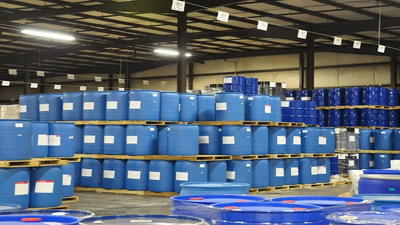
The Middle East is a pivotal player in the global chemical trade, driven by its extensive petrochemical production capabilities. Major exporters like Saudi Arabia, Qatar, and the UAE supply a variety of chemicals, including ammonia, sulfuric acid, and chlorine, to markets in Asia-Pacific, Europe, North America, and Africa. The region"s strategic location enhances logistical advantages, facilitating access to significant shipping routes. There is a growing focus on developing downstream industries, such as plastic conversion and polymer processing, aimed at adding value to the chemical supply chain. International investments and joint ventures have led to the establishment of large-scale chemical complexes, promoting local economic growth. Compliance with stringent regulations regarding product quality and safety is crucial for successful chemical trade. Despite a decline in market value due to regulatory restrictions, the chemical market is projected to recover, with an expected growth of 1.8% by 2024. The Middle East imports a variety of chemicals, including specialty chemicals and fertilizers, primarily from countries like China, India, Germany, and Turkey.
Bilateral and regional trade agreements, particularly among Gulf Cooperation Council (GCC) countries, are enhancing trade facilitation. The chemical trade landscape in the Middle East is characterized by a blend of local production and international sourcing, making it a dynamic and profitable sector."
-

Laboratory chemicals and nanomaterials are essential in scientific research, providing the necessary substances for experimentation and analysis. Laboratory chemicals, including acids, bases, solvents, reagents, and organic and inorganic compounds, are crucial for various laboratory procedures. They are chosen for their purity and compatibility with specific applications. Laboratory nanomaterials, which are synthesized at the nanoscale, exhibit unique properties that enhance their utility across multiple scientific disciplines. These materials are increasingly important in sectors like electronics, medicine, and environmental science. The market for nanomaterials is expected to grow significantly, driven by innovations in nanochemistry and applications in diverse fields. Key applications include the development of nanoparticles, nanocomposites, quantum dots, and nanosensors, each serving specialized functions in technology and healthcare. The synthesis of these materials involves advanced techniques, and their handling requires stringent safety protocols due to potential health and environmental risks. As the demand for laboratory chemicals and nanomaterials rises, understanding their properties and applications becomes critical for industries and research institutions in the Middle East and beyond.
-
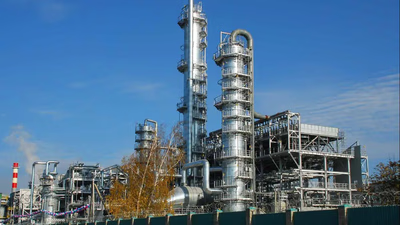
Chemicals are categorized based on various characteristics, including molecular composition, functional properties, supply chain position, and physical states. They can be classified into organic and inorganic chemicals, with organic chemicals containing carbon atoms and being associated with living organisms. Inorganic chemicals, on the other hand, include metals, minerals, acids, and bases. Additionally, chemicals are grouped by their roles in industries, such as solvents, surfactants, and catalysts. The supply chain classification includes raw materials, intermediates, and finished products. Specialty chemicals, which are high-value and customized, play crucial roles in sectors like electronics and healthcare. Agricultural chemicals, including fertilizers and pesticides, enhance crop yield and protect against pests. Pharmaceutical chemicals are essential for drug production, while basic chemicals serve as foundational materials in various industries.
Understanding these classifications aids in grasping market dynamics and the specialized applications of chemicals, which are also assessed for potential hazards to human health and the environment. This comprehensive categorization is vital for businesses engaged in import-export activities, particularly in the Middle East and West Asia, where trade platforms facilitate B2B interactions among verified exporters and importers.
-
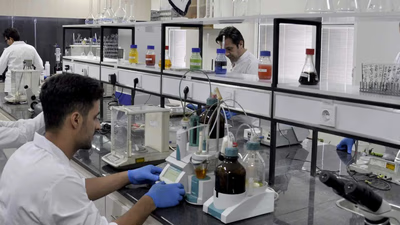
Synthetic chemical compounds have significantly impacted various industries, from pharmaceuticals to agriculture. Their development has enabled the creation of essential products such as antibiotics, polymers, and agrochemicals. In the pharmaceutical sector, synthetic compounds are crucial for producing drugs that treat diseases, including antibiotics and pain relievers. In agriculture, these compounds enhance crop yields and protect plants through pesticides and fertilizers. The textile industry benefits from synthetic dyes and pigments, which provide color to various materials. Surfactants, another category of synthetic compounds, are vital in detergents and personal care products, improving their effectiveness. Additionally, industrial chemicals, including sulfuric acid and solvents, play a key role in manufacturing processes. The versatility of synthetic compounds extends to food preservation, allowing for the creation of flavorful and long-lasting food products. Overall, the synthesis of chemical compounds has revolutionized multiple sectors, offering innovative solutions and enhancing product quality.
-

Food and pharmaceutical chemicals are essential for ensuring safety, quality, and efficacy in their respective industries. These chemicals are regulated by bodies like the FDA and EMA to protect consumer health. In food production, additives such as preservatives, antioxidants, and flavor enhancers play a vital role in enhancing flavor, texture, and shelf life. Similarly, in pharmaceuticals, active pharmaceutical ingredients (APIs) are crucial for therapeutic effects, while excipients aid in drug delivery and stability. The use of solvents is also significant in drug manufacturing. Food preservatives inhibit microbial growth and extend shelf life, while processing aids improve efficiency and safety. Additionally, packaging materials made from various chemicals protect food products from contamination and degradation. The development of these chemicals has advanced the pharmaceutical industry, enabling the production of a wide range of drugs. Overall, food and pharmaceutical chemicals are integral to public health, enhancing both food safety and drug efficacy.
-

Natural chemical compounds exist in solid, liquid, and gaseous forms, comprising individual elements or complex molecules. Gases like oxygen and nitrogen are prevalent in the atmosphere, while water, a crucial liquid, exhibits unique properties affecting Earth"s geology and biology. Alkaloids, terpenes, flavonoids, and phenolic compounds represent diverse organic chemicals found in plants, each with significant biological activities and applications in pharmaceuticals, essential oils, and food products. Essential oils, proteins, and enzymes play vital roles in various industries, including food processing and medicine. Antibiotics, produced by microorganisms, are essential for treating infections. Minerals, essential for biological processes, are found in rocks and soil. Understanding these natural chemicals is crucial for industries such as agriculture, pharmaceuticals, and environmental science, highlighting their importance in trade and supply chain solutions across the Middle East and West Asia."
-

The chemical industry is a critical sector that encompasses the production, manufacturing, and distribution of a wide range of chemicals and chemical products. It supports various industries, including agriculture, healthcare, construction, and automotive, by providing essential materials and intermediates. Key components include industrial acids like sulfuric and hydrochloric acids, alkalies such as sodium hydroxide, and solvents like acetone and ethanol. The industry also produces surfactants, polymers, and specialty chemicals, which are vital for numerous applications. Moreover, the sector is focused on innovation and sustainability, investing in research and development to create eco-friendly alternatives and improve manufacturing processes. The production stages involve raw material sourcing, chemical synthesis, quality control, and distribution, ensuring compliance with safety and regulatory standards. Overall, the chemical industry plays a foundational role in modern economies, driving advancements and supporting a diverse range of applications across multiple sectors.
-
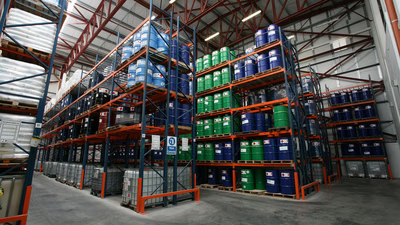
Chemicals are substances with distinct molecular compositions, existing in solid, liquid, gas, or plasma states. They are crucial in various industries, including manufacturing, agriculture, healthcare, and construction. Chemicals serve as raw materials for products like pharmaceuticals, plastics, and textiles, and are essential for agricultural practices as fertilizers and pesticides. The demand for chemicals is driven by economic growth, population increases, and technological advancements. Global trade in chemicals is influenced by international agreements, market competition, and regulatory compliance. Sustainable practices are gaining traction, focusing on reducing environmental impacts through the development of green chemicals. The chemicals market is also affected by price fluctuations and innovations in technology. Understanding the diverse categories of chemicals, such as organic and inorganic, is vital for industries reliant on these substances. While many chemicals are beneficial, some can be hazardous if not handled properly, emphasizing the need for adherence to safety guidelines.








